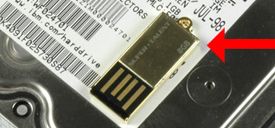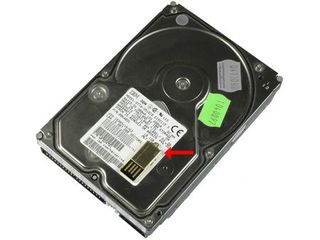USB Thumb Drive Vs. Hard Drive

10 Years of Storage Development
It won’t be long before 64 GB USB thumb drives hit the mainstream, seeing as 32 GB drives have been around for many months. Naturally, the introduction of 128 GB USB flash drives can’t be far behind. However, flash drives have not only gotten larger in terms of capacity, they’ve also undergone an amazing miniaturization resulting in USB flash thumb drives that are actually much smaller than a thumb. We decided to compare one of the smallest models to an equivalent hard drive that we found in our hardware catacombs.

The current generation of flash-based USB thumb drives has reached capacities that were available roughly 10 years ago in the hard drive space. And while the good old desktop hard drive has improved in capacity by 100 times and performance around 12 times in the unchanged 3.5” form factor, USB flash drives have become faster and smaller while at least doubling capacity every year. But have flash-based storage devices also reached the same level of performance? Or are they even faster?
Performance Considerations
Comparing an old 3.5” hard drive and a modern USB thumb drive is actually not so far off, as the maximum bandwidth of a decade-old 3.5” UltraATA hard drive is equivalent to the maximum throughput of USB 2.0 used today. Hard drives employed UltraATA/33 interfaces in 1997/1998, which let them reach a theoretical bandwidth of 33 MB/s, while staying around 30 MB/s in real life due to protocol overhead. USB 2.0, which has a gross bandwidth of 480 Mbit/s, actually achieves slightly more than 30 MB/s.
We are sure that the access times of the USB flash drive will be a lot quicker than those of the hard drive, but it’ll be interesting to look at the throughput.
Stay on the Cutting Edge
Join the experts who read Tom's Hardware for the inside track on enthusiast PC tech news — and have for over 25 years. We'll send breaking news and in-depth reviews of CPUs, GPUs, AI, maker hardware and more straight to your inbox.
Current page: 10 Years of Storage Development
Next Page Hard Drive vs USB Thumb DriveMost Popular

